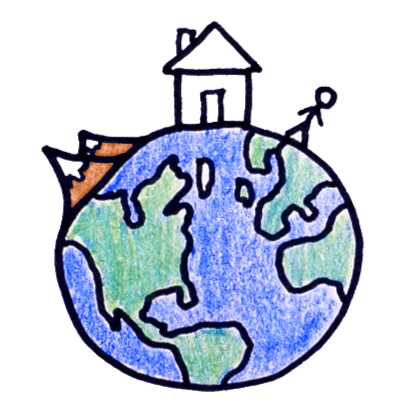2023-08-10
[public] 99.2K views, 33.4K likes, dislikes audio only
Many of the greatest biological dispersal events in history likely happened because animals inadvertently traveled across the oceans on floating debris.
LEARN MORE
**************
To learn more about this topic, start your googling with these keywords:
- Oceanic dispersal: A type of biological dispersal where terrestrial animals transfer from one land mass to another via a sea crossing.
- Rafting event: Oceanic dispersal that happens via floating vegetation.
- Platyrrhini: The so-called “New World Monkeys” that descended from African simians that arrived in South America roughly 30-40 million years ago.
- South Equatorial Current: A current maintained by the trade winds that flows westward along the equator.
SUPPORT MINUTEEARTH
**************************
If you like what we do, you can help us!:
- Become our patron: https://patreon.com/MinuteEarth
- Our merch: http://dftba.com/minuteearth
- Our book: https://minuteearth.com/books
- Share this video with your friends and family
- Leave us a comment (we read them!)
CREDITS
*********
David Goldenberg | Script Writer, Narrator and Director
Arcadi Garcia i Rius | Illustration, Video Editing and Animation
Nathaniel Schroeder | Music
MinuteEarth is produced by Neptune Studios LLC
OUR STAFF
************
Lizah van der Aart • Sarah Berman • Cameron Duke
Arcadi Garcia i Rius • David Goldenberg • Melissa Hayes
Alex Reich • Henry Reich • Peter Reich
Ever Salazar • Leonardo Souza • Kate Yoshida
OUR LINKS
************
Youtube | https://youtube.com/MinuteEarth
TikTok | https://tiktok.com/@minuteearth
Twitter | https://twitter.com/MinuteEarth
Instagram | https://instagram.com/minute_earth
Facebook | https://facebook.com/Minuteearth
Website | https://minuteearth.com
Apple Podcasts| https://podcasts.apple.com/us/podcast/minuteearth/id649211176
REFERENCES
**************
Carlos G. Schrago , Claudia A. M. Russo, Timing the Origin of New World Monkeys, Molecular Biology and Evolution, Volume 20, Issue 10, October 2003, Pages 1620–1625. Retrieved from: https://doi.org/10.1093/molbev/msg172
Defler, T.R. (2018). Platyrrhine Monkeys: The Fossil Evidence. Topics in Geobiology. Retrieved from: https://link.springer.com/chapter/10.1007/978-3-319-98449-0_8
Drury, S. (2020). How did monkeys get to South America? Earth Logs. Retrieved from:
https://earthlogs.org/2020/04/14/how-did-monkeys-get-to-south-america/
Queiroz, A. (2004). The REsurrection of Oceanic Dispersal in Historical Biogeography. Trends in Ecology & Evolution. 20:2 (68-73). Retrieved from: https://www.sciencedirect.com/science/article/abs/pii/S0169534704003362
Ali, J., Huber, M. Mammalian biodiversity on Madagascar controlled by ocean currents. Nature 463, 653–656 (2010). Retrieved from: https://doi.org/10.1038/nature08706
Black, R. (2020). More Than 30 Million Years Ago, Monkeys Rafted Across the Atlantic to South America. Smithsonian. Retrieved from: https://www.smithsonianmag.com/science-nature/monkeys-raft-across-atlantic-twice-180974637/
Lawton, G. (2021). On a Raft and a Prayer. NewScientist. 252:3365-3366 (50-52). Retrieved from: https://www.sciencedirect.com/science/article/abs/pii/S0262407921022727
Ali, Jason. (2023). Direct Communication. DEpartment of Earth Science, University of Hong Kong. https://www.earthsciences.hku.hk/people/academic-staff/dr-ali-jason
https://patreon.com/minuteearth
/youtube/video/atCgZPr_TlI

